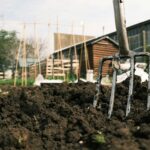Water damage ranks among the most expensive home repairs, with the average claim costing homeowners over $11,000.
Yet many property owners remain unaware that hidden leaks can silently wreak havoc for months before becoming visible. Understanding the subtle warning signs of concealed water leaks can save you thousands of dollars in repairs and protect your home’s structural integrity.
Hidden water leaks pose a serious threat to your property’s foundation, walls, and electrical systems.
Unlike obvious burst pipes or overflowing toilets, these stealth culprits operate behind walls, under floors, and in crawl spaces where they go unnoticed until significant damage occurs.
By the time you see water stains or feel soft flooring, the problem has likely been developing for weeks or months. This comprehensive guide will help you identify the early warning signs of hidden water leaks throughout your home.
You’ll discover practical inspection techniques, understand when to call for professional help, and learn more about protecting your investment before minor issues become major disasters.
Unusual Water Bill Increases
Monitor Monthly Usage Patterns
Your water bill provides valuable clues about potential leaks. A sudden spike in usage without corresponding changes in household activities often indicates hidden plumbing issues. Track your monthly consumption over several billing cycles to establish baseline usage patterns.
Key indicators to watch for include:
- Unexplained increases of 10% or more in monthly water usage
- Consistent high usage during periods when you’re away from home
- Gradual increases over several months without lifestyle changes
- Usage spikes that don’t correlate with seasonal activities like lawn watering
Calculate Your Leak Rate
Perform a simple meter test to detect ongoing leaks. Turn off all water sources in your home, including appliances and fixtures. Check your water meter reading, wait one hour without using any water, then check again. Any movement indicates a leak somewhere in your system.
Foundation and Structural Warning Signs
Exterior Foundation Inspection
Walk around your home’s exterior regularly, paying attention to the foundation and surrounding soil. Hidden leaks can create noticeable changes in these areas before becoming visible inside your home.
Look for these exterior warning signs:
- Unexplained wet spots in your yard, especially during dry weather
- Unusually green or lush grass in specific areas
- Foundation cracks that appear suddenly or grow larger
- Soil erosion around the foundation perimeter
- Standing water in areas that typically drain well
Interior Structural Changes
Hidden water leaks can compromise your home’s structural integrity over time. Regular inspection of interior surfaces helps identify problems early.
Monitor these areas for changes:
- Wall discoloration or fading paint in isolated spots
- Soft or spongy flooring in bathrooms, kitchens, or basements
- Warped baseboards that pull away from the walls
- Ceiling stains that appear gradually or change shape
- Door and window frames that become difficult to open or close
Humidity and Air Quality Changes
Unusual Moisture Levels
Hidden leaks create excess humidity in affected areas, leading to noticeable changes in air quality and comfort levels. These changes often occur before visible water damage appears.
Signs of elevated moisture include:
- Persistent musty odors in specific rooms or areas
- Condensation on windows during moderate weather
- Increased allergy symptoms among household members
- Foggy mirrors that take longer than usual to clear
- Damp feeling in rooms that should be dry
Mold and Mildew Growth
Excess moisture from hidden leaks creates ideal conditions for mold and mildew development. These organisms can begin growing within 24-48 hours of water exposure.
Watch for early signs of microbial growth:
- Dark spots appearing on walls, ceilings, or corners
- Peeling wallpaper or paint in humid areas
- Increased respiratory issues among family members
- Visible mold colonies in cabinets, closets, or storage areas
- White, chalky residue on basement walls or concrete surfaces
Plumbing System Irregularities
Water Pressure Fluctuations
Hidden leaks can affect water pressure throughout your home’s plumbing system. Monitor pressure levels during routine activities to identify potential issues.
Common pressure-related symptoms include:
- Reduced flow from faucets or showerheads
- Inconsistent pressure between different fixtures
- Pressure drops when multiple fixtures operate simultaneously
- Gurgling sounds from drains or pipes
- Running water sounds when no fixtures are in use
Temperature and Quality Changes
Leaks in hot water lines create noticeable changes in water temperature and quality. These changes often precede visible damage or higher utility bills.
Temperature and quality indicators:
- Longer wait times for hot water to reach fixtures
- Inconsistent water temperature during showers or washing
- Discolored water from specific taps or appliances
- Metallic taste or unusual odors in drinking water
- Reduced the hot water capacity of your water heater
Appliance and Fixture Performance Issues
Kitchen and Laundry Equipment
Appliances connected to your home’s plumbing system can exhibit performance changes when hidden leaks affect water pressure or supply lines.
Appliance warning signs include:
- Washing machines are taking longer to fill or displaying error codes
- Dishwashers leaving dishes wet or showing poor cleaning performance
- Ice makers producing less ice or making unusual noises
- Water dispensers delivering weak flow or inconsistent temperatures
- Garbage disposals are backing up more frequently than normal
Bathroom Fixtures
Bathroom fixtures often provide early warning signs of hidden plumbing issues. Regular observation during routine use helps identify developing problems.
Fixture indicators to monitor:
- Toilets that run continuously or require multiple flushes
- Shower pressure that decreases gradually over time
- Faucet drips that worsen or develop suddenly
- Drain performance that becomes sluggish in multiple fixtures
- Unusual sounds from pipes when fixtures operate
Advanced Detection Techniques
Professional Water Leak Detection Methods
When subtle signs suggest hidden leaks but visual inspection proves inconclusive, professional detection services offer advanced diagnostic capabilities.
Professional techniques include:
- Acoustic leak detection using sensitive listening equipment
- Thermal imaging cameras that identify temperature variations
- Moisture meters for measuring hidden water content in materials
- Pressure testing to isolate specific sections of plumbing
- Video pipe inspection to examine interior pipe conditions
DIY Monitoring Tools
Homeowners can invest in affordable monitoring equipment to detect leaks early and prevent extensive damage.
Useful water leak detection tools:
- Water leak sensors are placed near appliances and fixtures
- Smart water meters that provide real-time usage data
- Moisture detection strips for checking hidden areas
- Pipe freeze alarms that also detect temperature changes from leaks
- Automatic shut-off valves that activate when leaks are detected
Protecting Your Investment Moving Forward
Early detection of hidden water leaks requires consistent vigilance and systematic inspection routines. Establish monthly walkthrough schedules to check vulnerable areas, monitor utility bills for usage patterns, and address minor issues before they escalate into costly home damage.
Consider investing in professional plumbing repair services for annual inspections, especially in older homes where aging pipes increase leak risks. Modern leak detection technology makes it easier than ever to identify problems early, potentially saving thousands in repair costs.
Remember that water damage extends far beyond visible stains or flooding. Hidden leaks compromise structural integrity, create health hazards, and reduce property values over time. By staying alert to these warning signs and acting promptly when issues arise, you protect both your home and your family’s well-being for years to come.












